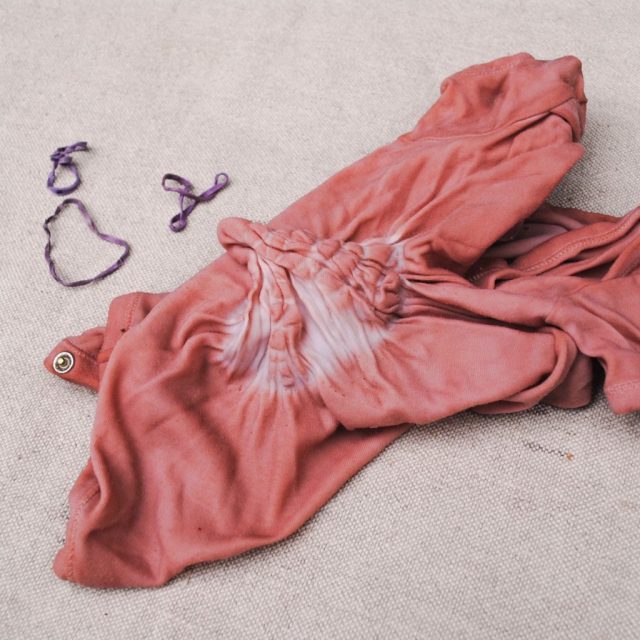How to scrunch dye with onion skins
[responsivevoice_button]
I decided to go with scrunch dyeing for the upcycled tank top from my last post. Here’s a simple video tutorial of the method – scroll down for step by step instructions.
Step one: Scrunching
Choose a white item of clothing to dye.

Begin scrunching the top from one corner inwards. You can do a gentle or tight scrunch, they will just give different results. Do it tightly for strong contrast between dyed and undyed sections, or do it very loosely for a slightly dappled, almost solid colour.


Keep scrunching until the whole item is scrunched up.

Step two: Binding
Hold the scrunched bundle together with loose weave fabric, a mesh bag, string or rubber bands, so that it will keep this scrunched shape in the dye pot. The fabric on the outside will pick up the most dye, and some colour will seep into the folds. Again, how tightly or loosely you bind it will affect the results. I have used an old delicates washing bag to hold this bundle together, and I went for a medium scrunch, to get some obvious colour variation but without stark white patches.

Step three: Dyeing
Put your bundle in a dyepot and add your dyestuff. I used onion skins, because they are easy to get and they contain strong, substantive dyes. I also added a splash of iron mordant, to shift the colour to olive green and to help bind the dye to the fabric. You could also prepare your fabric with soy milk binder or a mordant in advance, but I was keeping things simple here.
Cover the fabric and dyestuff with boiling water, and simmer until you get a good depth of colour. I cooked this bundle for about 90 minutes, then let it sit in the dyebath overnight.

Step four: Unwrapping
Once your bundle has cooled down, unwrap it and admire the beautiful, organic pattern you have created!


Every scrunch dye is different and it is impossible to replicate results. Isn’t it wonderful sometimes to surrender to chance and embrace whatever happens? Such good medicine for the year we have just had.
I hope you enjoyed this simple tutorial and as always, I’d love to see your results if you give it a try. Leave a link in the comments or tag me on Instagram @gumnutmagic

How to scrunch dye with onion skins Read More »
















































